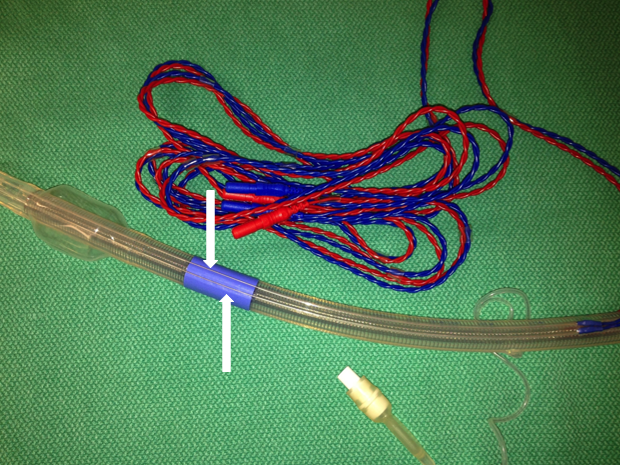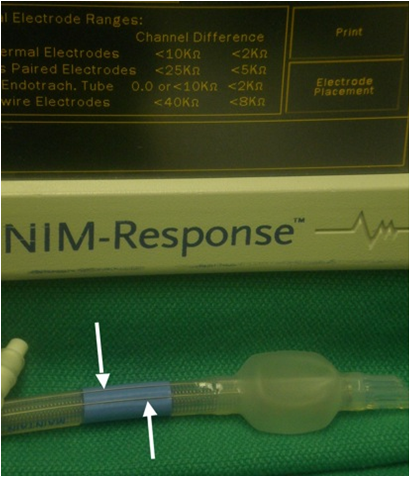A Reliable Technique to Make NIM Tube Work (Preview)
Presented by Dr. Vladimir Nekhendzy, Stanford University Medical Center.
Intraoperative identification and functional monitoring of the vagus nerve and its branches, most commonly recurrent laryngeal nerve (RLN), is becoming standard of care during surgery involving brainstem, skull base and especially thyroid and parathyroid gland, where the incidence of RLN compromise may be as high as 13%.1-6 This is particularly true in the setting where the course of the RLN is aberrant, distorted by masses, postradiation fibrosis of the neck, or involved with scar tissue, as well as in the situations associated with preexisting unilateral vocal cord paralysis.6-8
The specialized endotracheal tubes (ETT), such as Xomed and TriVantage Nerve Integrity Monitoring (NIM) ETTs (Medtronic Xomed Inc., Jacksonville, FL USA) allow for RLN identification through continuous intraoperative EMG monitoring of the laryngeal muscles.9 These ETTs incorporate imbedded bilateral stainless steel wire surface electrodes (Xomed ETT) or silver electrode “tabs”, which are exposed above the cuff, and come in direct contact with the vocal cords. (Figure 1a) When connected to the NIM-Response 2.0/3.0 system®, (Figure 1b) the electrodes continuously track the EMG activity of the laryngeal muscles, thereby providing an immediate audible and visual feedback to the surgeon about the risk of RLN trauma.10 In addition, the system allows the surgeons to use the monopolar and bipolar stimulating probes during the dissection, to allow for early RLN identification and preservation.

Figure 1a. The Xomed NIM electromyographic (EMG) endotracheal tube (ETT). White arrows indicate the exposed wire electrodes of the Xomed ETT, which come in direct contact with the mucosa of the vocal cords in the blue tab area. There are 4 wires total, 2 on each side of the Xomed ETT.

Figure 1b. The Xomed ETT and NIM-Response 2.0 Nerve Integrity Monitoring (NIM) System (Medtronic Xomed, Inc., Jacksonville, FL USA). The NIM-Response System provides immediate visual and audio alerts of sudden activation of the monitored nerve against the continuously referenced, background EMG activity.
Copyright 2012, Elsevier. Used with permission from Nekhendzy V, Lopez JR, Damrose EJ. A method of securing the Xomed endotracheal tube for accurate monitoring of the recurrent laryngeal nerve. J Clin Anesth. 2012;24:259-60.
The key to success of intraoperative RLN monitoring with NIM ETTs and systems, however, rests with the anesthesiologist. The NIM tubes must be properly placed and maintained midline...
Join SHANA or Log in to view more/discuss on Forum.



